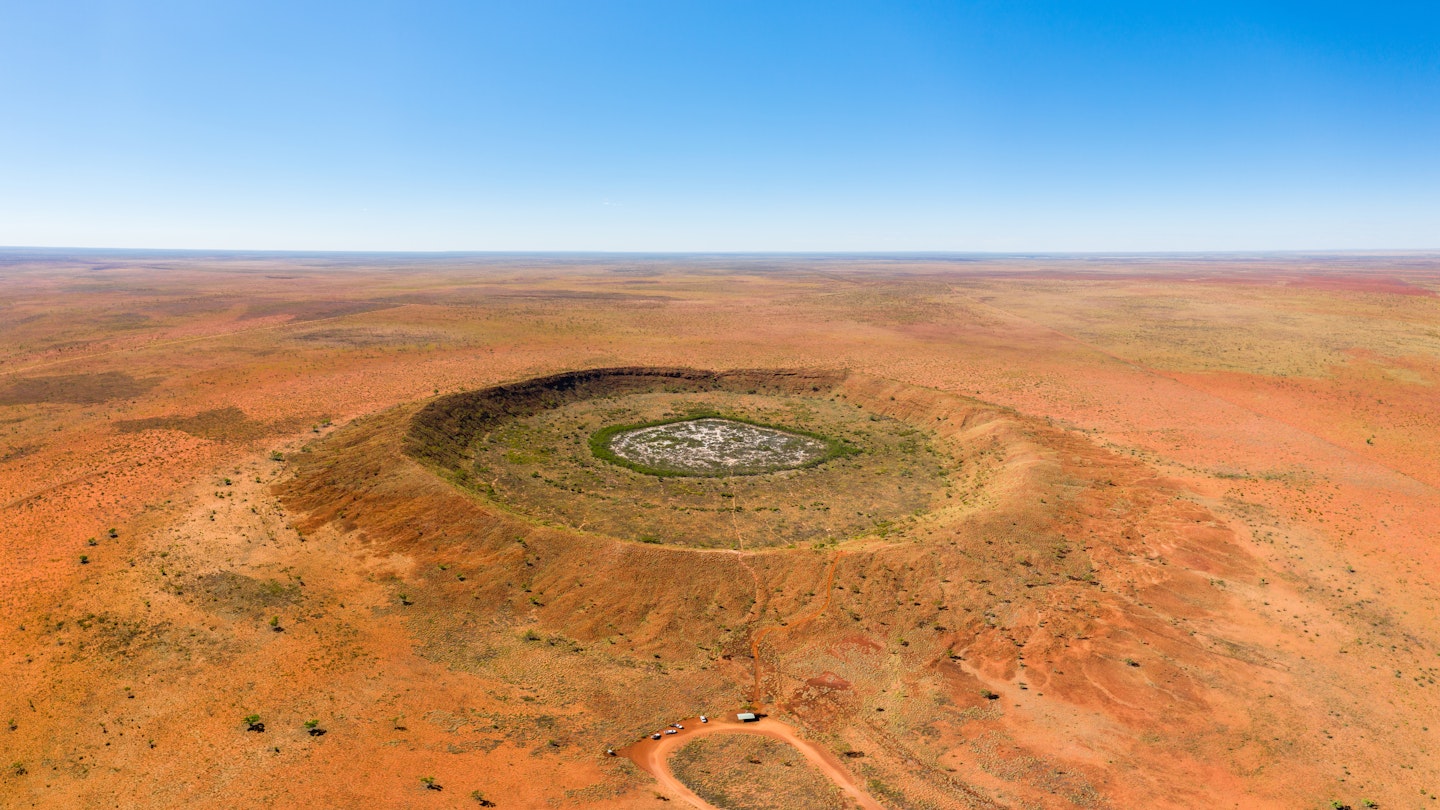Buried deep in the ground of the outback of , geologists have discovered the scars of a large 100 million-year-old meteorite crater.
Signs of the meteorite crater were first detected while a drilling company was working in private gold fields south of Ora Banda, a former mining town now regarded as a ghost town in Western Australia’s remote north. With a diameter of about 5 km (3 miles), the crater is about five times bigger than in Kimberley, which is one of the largest meteorite impact craters found in , according to reports in the Guardian.

The crater isn’t visible from the surface; however, a team of geologists led by Perth-based geophysicist Dr. Jason Meyers has successfully studied it by examining sediment samples and conducting electromagnetic and gravimetric mapping. These methods help measure the strength of the crater’s gravitational field. The team believes the meteorite struck approximately 100 million years ago, but further research is essential.
“In geology, when you tell someone you found a meteorite crater, they might roll their eyes due to their rarity,” Dr. Meyers explained to ABC. “However, when you see shatter cones, you know there’s evidence because they only form in nuclear blasts or meteorite impacts.”

This discovery is a part of a larger narrative. Consequently, the next significant inquiry for geologists is to understand the effects the crater’s impact had on the planet. They remain optimistic that their ongoing studies will unveil further discoveries and help predict future meteorite strikes on Earth.
The world’s largest known impact crater is the Vredefort Dome, which struck the Earth around two billion years ago. With an estimated diameter of 190 km (118 miles), it dwarfs the Ora Banda crater. Located in Northern Free State, South Africa, it has gained popularity among tourists after being designated as a UNESCO World Heritage Site in 2005.




